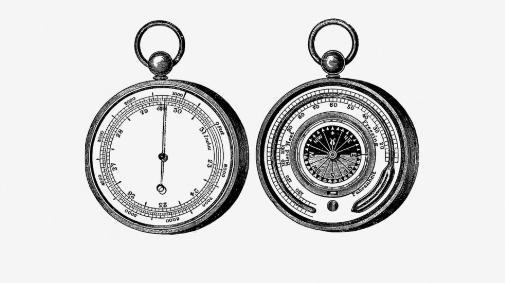
How atmospheric pressure works
Basically, it’s the weight of air — more precisely, its pressure on the Earth. In this new lesson of the Windy.app Meteorological Textbook (WMT) and newsletter for better weather forecasting you will learn more about what is atmospheric pressure and how it works.
The higher you are, the less air there is above you. That’s why the pressure is lower at higher levels. The pressure on the Earth’s surface changes because of mixed temperatures.
Why is warm air lighter?
Atmospheric pressure is the pressure of air on a certain spot. The lighter the air, the lower the pressure is. Warm air is lighter. That’s why the pressure of warm air is lower. Heating increases the speed of molecules => the space between them gets larger => the density of air decreases. The lower the density, the lower the weight is.
How is atmospheric pressure measured?
It’s measured using a barometer. A typical barometer is a glass tube about 1 meter high. One end is open, the other — sealed. The tube is filled with mercury and installed upside-down in a container.

When the mercury’s weight is lower than the atmospheric pressure, its level rises, meaning the pressure is high.
Otherwise, the level falls, signaling low pressure.
A more modern barometer — the aneroid one. Looks like a compass or clock.

Inside there is a small pliable hollow box with a vacuum in it — that’s why slight pressure changes make its walls broaden or tighten.
The process makes levers move the needle which reflects the pressure change.
Barometers often feature another needle that you can fix on the current pressure level to see the changes afterwards.
Remember: Normal sea-level pressure equals 760 mm of mercury, or 1,013 millibars, or 1,013 hectopascals.
Use barometer to predict weather changes. How?
If you know atmospheric pressure figures, you can predict the weather for the next 12-24 hours. If pressure changes at least by a quarter of a hectopascal, the weather can change as well.
- High pressure signals sunny and calm weather. If it’s cloudy, a spike in pressure means it’ll be sunny soon.
- Low pressure allows cloud growth and more precipitation. If it’s sunny, a sudden pressure drop can mean rain or thick clouds. A quick drop (more than 3 hectopascals in 3 hours) flags a storm. The faster the pressure drops, the sooner the weather gets worse.
- Atmospheric pressure and wind. Air masses always tend to move to lower pressure areas. We call it wind.
Pressure difference is the only thing making the air move faster. The faster the pressure changes place to place, the higher wind speed is. All the other forces — like friction — only lower it or change the direction. Sudden pressure changes spell stronger winds.
Text: Windy.app team
Cover photo: Unsplash
You will also find useful
Explore different types of contour lines. Relief, atmosphere, ocean, and more
Latest News
Professional Weather App
Get a detailed online 10 day weather forecast, live worldwide wind map and local weather reports from the most accurate weather models.
Compare spot conditions, ask locals in the app chat, discover meteo lessons, and share your experience in our Windy.app Community.
Be sure with Windy.app.



